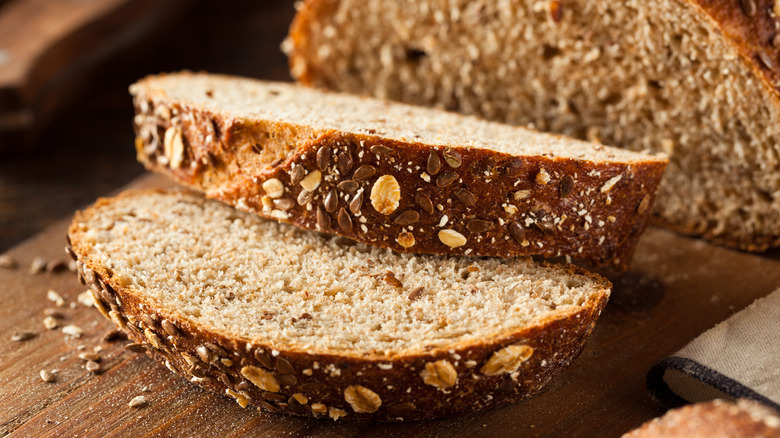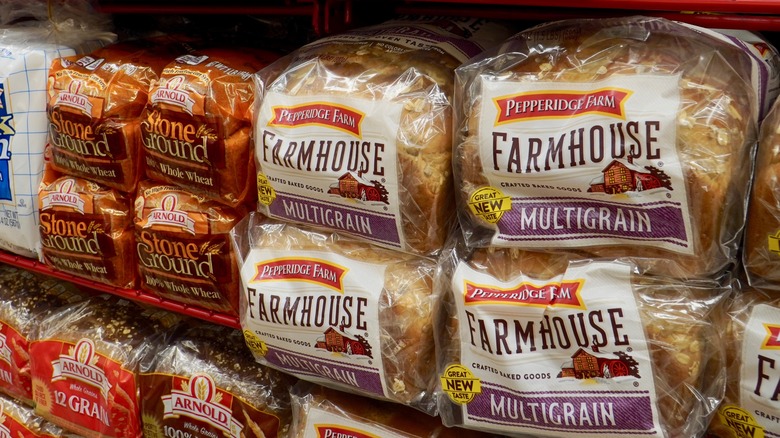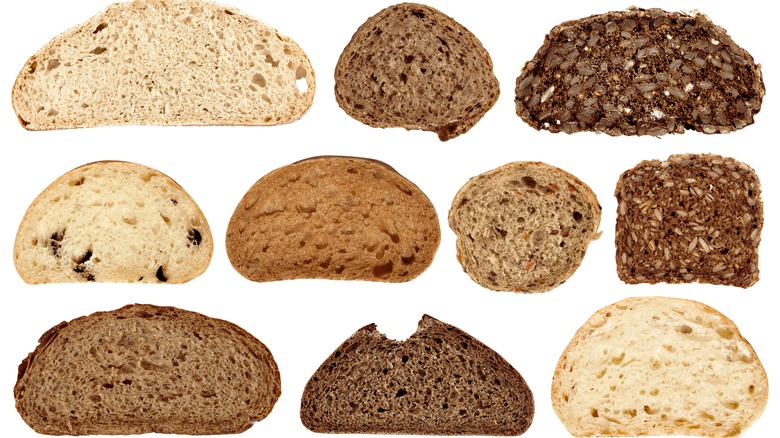Expert Nutritionist Explains The Difference Between Whole Wheat, Whole Grain, And Multigrain Bread
White bread, wheat bread, brioche, ciabatta, pita, naan, sourdough bread, and so on. There are dozens of bread varieties in the world. Some are easy to identify and differentiate from others, like pita and brioche. They look nothing alike, so it's unlikely that anyone would confuse one for the other.
But what about the ones that look alike or have similar nutritional content, like whole wheat, whole grain, and multigrain? By the name alone, we can deduce that multigrain is a type of bread that includes several different kinds of grain, but the question is, how does it differ from the other two?
Mashed interviewed Dr. Daryl Gioffre, celebrity nutritionist and author of "Get Off Your Sugar and Get Off Your Acid," to discuss the difference between whole wheat, whole grain, and multigrain bread. He also gave his recommendation on which one to eat over the others. The answer might surprise you.
All three breads offer nutritional value, but with a caveat
According to Dr. Gioffre, whole grain bread contains all three layers of the seed (grain kernel): bran, germ, and endosperm, "along with other possible grains, such as barley or oats." Whole wheat bread also contains all three layers of the grain kernel, only of wheat; it lacks the other grains that whole grain bread contains. He described multigrain bread as one that "uses multiple types of grain; however they do not necessarily have to be whole grains."
Because whole grain bread and whole wheat bread both contain the entire grain kernel, they're equally nutritious, as Healthline explains. The nutrients they include can help with weight management as well as reducing the risk of heart disease, type 2 diabetes, and other health problems. Multigrain bread can also contain all of the same nutrients, but only if they're 100% whole grain, according to Livestrong. All three of these breads are also high in fiber, which can keep you full for longer and prevent overeating before your next meal
These three types of bread, although nutritious, have some potentially harmful effects in the body. Dr. Gioffre pointed out their high carbohydrate and gluten content and the potential dangers of each. While the high carbohydrate content provides fuel for the body, they can also spike blood sugar, lead to inflammation, and cause the body to store fat, while gluten can cause negative changes in your gut, per a 2020 study published in a peer-reviewed scientific journal Nutrients.
Which bread is the best?
The answer to this question ultimately depends on the rest of your diet. Dr. Gioffre didn't recommend any of them because of their ability to raise blood sugar and cause inflammation. He also mentioned the acidity and fat storage risks associated with these breads, which are other reasons he wouldn't recommend them.
Instead, he suggested choosing non-whole grain sourdough bread because it "contains bacteria and yeast that break down and metabolize the gluten and other lectins. Sourdough bread ... will not spike your insulin levels as much, resulting in lower levels of inflammation and acidity." He also named sprouted bread as a good option because "the sprouting process denatures much of the gluten contained in the grain."
Although he didn't advise against eating whole wheat, whole grain, and multigrain breads, he did endorse the "everything in moderation" concept. He stressed the importance of finding the right balance and focusing mostly on healthy foods that will provide the nutrients your body needs while also making you strong. In doing this, your body will be able "to neutralize the acids" found in certain breads and other foods.
To recap, whole wheat, whole grain, and sometimes multigrain bread contain all three layers of the grain kernel, but whole wheat bread doesn't contain any other grain other than wheat. Although all three breads offer nutritional benefits, Dr. Gioffre recommends sourdough or sprouted bread instead, since they don't present the same gluten risks as the other breads.


